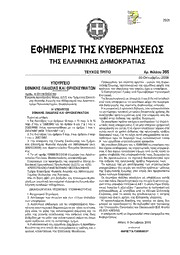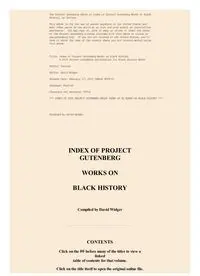
Preview Works on Black History
The Project Gutenberg EBook of Index of Project Gutenberg Works on Black History, by Various This eBook is for the use of anyone anywhere in the United States and most other parts of the world at no cost and with almost no restrictions whatsoever. You may copy it, give it away or re-use it under the terms of the Project Gutenberg License included with this eBook or online at www.gutenberg.org. If you are not located in the United States, you'll have to check the laws of the country where you are located before using this ebook. Title: Index of Project Gutenberg Works on Black History A 2019 Project Gutenberg Contribution for Black History Month Author: Various Editor: David Widger Release Date: February 27, 2019 [EBook #58975] Language: English Character set encoding: UTF-8 *** START OF THIS PROJECT GUTENBERG EBOOK INDEX OF PG WORKS ON BLACK HISTORY *** Produced by David Widger INDEX OF PROJECT GUTENBERG WORKS ON BLACK HISTORY Compiled by David Widger CONTENTS Click on the ## before many of the titles to view a linked table of contents for that volume. Click on the title itself to open the original online file. ## THE JOURNAL OF NEGRO HISTORY, Vol. 1. Jan. 1916 Various ## THE JOURNAL OF NEGRO HISTORY, Vol. 2, 1917 Various ## THE JOURNAL OF NEGRO HISTORY, Vol. 3, 1918 Various ## THE JOURNAL OF NEGRO HISTORY, Vol. 4, 1919 Various ## THE JOURNAL OF NEGRO HISTORY, Vol. 5, 1920 Various ## OUR WORLD, or THE SLAVEHOLDERS DAUGHTER F. Colburn Adams ## NARRATIVE OF THE LIFE OF FREDERICK DOUGLASS Frederick Douglass ## OTHER ARTICLES BY FREDERICK DOUGLASS Frederick Douglass ## MY BONDAGE AND MY FREEDOM Frederick Douglass JOHN BROWN Frederick Douglass ABOLITION FANATICISM IN NEW YORK Frederick Douglass ## THE SOULS OF BLACK FOLK W.E.B. Du Bois ## DARKWATER, VOICES FROM WITHIN THE VEIL W.E.B. Du Bois ## THE QUEST OF THE SILVER FLEECE W.E.B. Du Bois ## THE NEGRO W.E.B. Du Bois ## SUPPRESSION OF THE AFRICAN SLAVE TRADE TO THE USA W.E.B. Du Bois THE CONSERVATION OF RACES W.E.B. Du Bois ## UP FROM SLAVERY AN AUTOBIOGRAPHY B.T. Washington ## THE NEGRO PROBLEM B.T. Washington ## A NEGRO EXPLORER AT THE NORTH POLE B.T. Washington ## THE FUTURE OF THE AMERICAN NEGRO B.T. Washington ## TUSKEGEE & ITS PEOPLE B.T. Washington ## SHADOW AND LIGHT B.T. Washington ## THE NEGRO IN THE SOUTH B.T. Washington THE STORY OF SLAVERY B.T. Washington ## THE NEGRO IN THE SOUTH B.T. Washington ## FROM SLAVE TO COLLEGE PRESIDENT Pike ## UNDERGROUND RAILROAD FROM SLAVERY TO FREEDOM Siebert ## THE UNDERGROUND RAILROAD Still ## CLOTELLE Brown ## ESCAPE OF WM. WELLS BROWN FROM SLAVERY Brown ## NARRATIVE OF WILLIAM W. BROWN, A FUGITIVE SLAVEBrown ## DRED, A TALE OF THE GREAT DISMAL SWAMP Stowe ## UNCLE TOM'S CABIN Stowe ## STEP BY STEP American Tract ## THE IRON FURNACE Aughey ## A SOCIAL HISTORY OF THE AMERICAN NEGRO Brawley ## CAPTAIN CANOT, TWENTY YEARS A SLAVER Canot ## THE WHITE SLAVES OF ENGLAND Cobden ## THE BLACK EXPERIENCE IN AMERICA Coombs ## WHERE THE TWAIN MEET Gaunt ## FATHER HENSON'S STORY OF HIS LIFE Henson ## BLACK REBELLION, FIVE REVOLTS Higginson ## THIRTY YEARS A SLAVE Hughes ## INCIDENTS IN THE LIFE OF A SLAVE GIRL Jacobs ## 30 YEARS A SLAVE; 4 YEARS IN THE WHITE HOUSE Keckley ## THE SLAVERY QUESTION Lawrence ## JOURNAL OF A WEST INDIA PROPRIETOR Lewis ## THE NEGRO AND THE NATION Merriam ## THE SEA-WITCH Murray ## TWELVE YEARS A SLAVE Northup ## THE BROTHERS' WAR Reed ## THE BOY SLAVES Reid ## TWENTY-TWO YEARS A SLAVE Steward ## THE STORY OF MATTIE J. JACKSON Thompson ## POEMS Wheatley LIFE AND ADVENTURES OF HENRY BIBB Bibb THE LIFE OF HARRIET TUBMAN Bradford TABLES OF CONTENTS OF VOLUMES POEMS ON VARIOUS SUBJECTS, By Phillis Wheatley (Negro Servant To Mr. John Wheatley, Of Boston, In New- England) 1771 CONTENTS PREFACE. TO THE PUBLIC. P O E M S TO M AE C E N A S. O N V I R T U E. TO THE UNIVERSITY OF CAMBRIDGE, IN NEW-ENGLAND. TO THE KING’S MOST EXCELLENT MAJESTY. 1768. ON BEING BROUGHT FROM AFRICA TO AMERICA. ON THE DEATH OF THE REV. DR. SEWELL, 1769. ON THE DEATH OF THE REV. MR. GEORGE WHITEFIELD. 1770. ON THE DEATH OF A YOUNG LADY OF FIVE YEARS OF AGE. ON THE DEATH OF A YOUNG GENTLEMAN. TO A LADY ON THE DEATH OF HER HUSBAND. G O L I A T H O F G A T H. THOUGHTS ON THE WORKS OF PROVIDENCE. TO A LADY ON THE DEATH OF THREE RELATIONS. TO A CLERGYMAN ON THE DEATH OF HIS LADY. AN HYMN TO THE MORNING AN HYMN TO THE EVENING. ISAIAH lxiii. 1-8. ON RECOLLECTION. ON IMAGINATION. A FUNERAL POEM ON THE DEATH OF C. E. AN INFANT OF TWELVE MONTHS. TO CAPTAIN H———D, OF THE 65TH REGIMENT. TO THE RIGHT HONOURABLE WILLIAM, EARL OF DARTMOUTH O D E T O N E P T U N E. TO A LADY ON HER COMING TO NORTH-AMERICA WITH HER SON, FOR THE RECOVERY OF HER HEALTH. TO A LADY ON HER REMARKABLE PRESERVATION IN AN HURRICANE IN NORTH- CAROLINA. TO A LADY AND HER CHILDREN, ON THE DEATH OF HER SON AND THEIR BROTHER. TO A GENTLEMAN AND LADY ON THE DEATH OF THE LADY’S BROTHER AND SISTER, AND A CHILD OF THE NAME OF AVIS, AGED ONE YEAR. ON THE DEATH OF DR. SAMUEL MARSHALL. 1771. TO A GENTLEMAN ON HIS VOYAGE TO GREAT-BRITAIN FOR THE RECOVERY OF HIS HEALTH. TO THE REV. DR. THOMAS AMORY, ON READING HIS SERMONS ON DAILY DEVOTION, IN WHICH THAT DUTY IS RECOMMENDED AND ASSISTED. ON THE DEATH OF J. C. AN INFANT. AN H Y M N TO H U M A N I T Y. TO S. P. G. ESQ; TO THE HONOURABLE T. H. ESQ; ON THE DEATH OF HIS DAUGHTER. NIOBE IN DISTRESS FOR HER CHILDREN SLAIN BY APOLLO, FROM OVID’S METAMORPHOSES, BOOK VI. AND FROM A VIEW OF THE PAINTING OF MR. RICHARD WILSON. TO S. M. A YOUNG AFRICAN PAINTER, ON SEEING HIS WORKS. TO HIS HONOUR THE LIEUTENANT-GOVERNOR, ON THE DEATH OF HIS LADY. MARCH 24, 1773. A FAREWEL TO AMERICA. TO MRS. S. W. A REBUS, BY I. B. AN ANSWER TO THE REBUS, BY THE AUTHOR OF THESE POEMS. NARRATIVE OF THE LIFE OF FREDERICK DOUGLASS AN AMERICAN SLAVE. WRITTEN BY HIMSELF. CONTENTS PREFACE LETTER FROM WENDELL PHILLIPS, ESQ. FREDERICK DOUGLASS. CHAPTER I CHAPTER II CHAPTER III CHAPTER IV CHAPTER V CHAPTER VI CHAPTER VII CHAPTER VIII CHAPTER IX CHAPTER X CHAPTER XI APPENDIX A PARODY ADDITIONAL PROJECT GUTENBERG COLLECTED ARTICLES By Frederick Douglass CONTENTS MY ESCAPE FROM SLAVERY RECONSTRUCTION MY BONDAGE and MY FREEDOM By Frederick Douglass CONTENTS MY BONDAGE and MY FREEDOM EDITOR’S PREFACE INTRODUCTION CHAPTER I. Childhood CHAPTER II. Removed from My First Home CHAPTER III. Parentage CHAPTER IV. A General Survey of the Slave Plantation CHAPTER V. Gradual Initiation to the Mysteries of Slavery CHAPTER VI. Treatment of Slaves on Lloyd’s Plantation CHAPTER VII. Life in the Great House CHAPTER VIII. A Chapter of Horrors CHAPTER IX. Personal Treatment CHAPTER X. Life in Baltimore CHAPTER XI. “A Change Came O’er the Spirit of My Dream” CHAPTER XII. Religious Nature Awakened CHAPTER XIII. The Vicissitudes of Slave Life CHAPTER XIV. Experience in St. Michael’s CHAPTER XV. Covey, the Negro Breaker CHAPTER XVI. Another Pressure of the Tyrant’s Vice CHAPTER XVII. The Last Flogging CHAPTER XVIII. New Relations and Duties CHAPTER XIX. The Run-Away Plot CHAPTER XX. Apprenticeship Life CHAPTER XXI. My Escape from Slavery LIFE as a FREEMAN CHAPTER XXII. Liberty Attained CHAPTER XXIII. Introduced to the Abolitionists CHAPTER XXIV. Twenty-One Months in Great Britain CHAPTER XXV. Various Incidents RECEPTION SPEECH [10]. At Finsbury Chapel, Moorfields, England, May 12, Dr. Campbell’s Reply LETTER TO HIS OLD MASTER. [11]. To My Old Master, Thomas Auld THE NATURE OF SLAVERY. Extract from a Lecture on Slavery, at Rochester, INHUMANITY OF SLAVERY. Extract from A Lecture on Slavery, at Rochester, WHAT TO THE SLAVE IS THE FOURTH OF JULY?. Extract from an Oration, at THE INTERNAL SLAVE TRADE. Extract from an Oration, at Rochester, July THE SLAVERY PARTY. Extract from a Speech Delivered before the A. A. S. THE ANTI-SLAVERY MOVEMENT. Extracts from a Lecture before Various FOOTNOTES UP FROM SLAVERY: AN AUTOBIOGRAPHY By Booker T. Washington CONTENTS Preface Introduction UP FROM SLAVERY Chapter I A Slave Among Slaves Chapter II Boyhood Days Chapter III The Struggle For An Education Chapter IV Helping Others Chapter V The Reconstruction Period Chapter VI Black Race And Red Race Chapter VII Early Days At Tuskegee Chapter VIII Teaching School In A Stable And A Hen-House Chapter IX Anxious Days And Sleepless Nights Chapter X A Harder Task Than Making Bricks Without Straw Chapter XI Making Their Beds Before They Could Lie On Them Chapter XII Raising Money Chapter XIII Two Thousand Miles For A Five-Minute Speech Chapter XIV The Atlanta Exposition Address Chapter XV The Secret Of Success In Public Speaking Chapter XVI Europe Chapter XVII Last Words THE NEGRO PROBLEM By Booker T. Washington and Others CONTENTS I Industrial Education for the Negro Booker T. Washington 7 II The Talented Tenth W.E. Burghardt DuBois 31 III The Disfranchisement of the Negro Charles W. Chesnutt 77 IV The Negro and the Law Wilford H. Smith 125 V The Characteristics of the Negro People H.T. Kealing 161 VI Representative American Negroes Paul Laurence Dunbar 187 VII The Negro's Place in American Life at the Present Day T. Thomas Fortune 211 A NEGRO EXPLORER AT THE NORTH POLE By Matthew A. Henson With A Foreword By Robert E. Peary Rear Admiral, U. S. N., Retired And An Introduction By Booker T. Washington CONTENTS page Foreword v Introduction xv CHAPTER I The Early Years: Schoolboy, Cabin-Boy, Seaman, and Lieutenant Peary's Body-Servant— First Trips to the Arctic 1 CHAPTER II Off for the Pole—How the Other Explorers Looked—The Lamb-Like Esquimos—Arrival at Etah 15 CHAPTER III Finding of Rudolph Franke—Whitney Landed—Trading and Coaling—Fighting the Ice-packs 26 CHAPTER IV Preparing for Winter at Cape Sheridan—The Arctic Library 35 CHAPTER V Making Peary Sledges—Hunting in the Arctic Night—the Excitable Dogs and Their Habits 40 CHAPTER VI The Peary Plan—a Rain of Rocks—My Friends, the Esquimos 46 CHAPTER VII Sledging to Cape Columbia—Hot Soldering in Cold Weather 52 CHAPTER VIII In Camp at Columbia—Literary Igloos—The Magnificent Desolation of the Arctic 62 CHAPTER IX Ready for the Dash to the Pole—The Commander's Arrival 70 [x] CHAPTER X Forward! March! 75 CHAPTER XI Fighting up the Polar Sea—Held up by the "Big Lead" 78 CHAPTER XII Pioneering the Way—Breaking Sledges 93 CHAPTER XIII The Supporting-Parties Begin to Turn Back 103 CHAPTER XIV Bartlett's Farthest North—His Quiet Good-By 116 CHAPTER XV The Pole! 127 CHAPTER XVI The Fast Trek Back to Land 140 CHAPTER XVII Safe on the Roosevelt—Poor Marvin 145 CHAPTER XVIII After Musk-Oxen—The Doctor's Scientific Expedition 153 CHAPTER XIX The Roosevelt Starts for Home—Esquimo Villages—New Dogs and New Dog Fights 161 CHAPTER XX Two Narrow Escapes—Arrival at Etah—Harry Whitney—Dr. Cook's Claims 170 CHAPTER XXI Etah to New York—Coming of Mail and Reporters—Home! 180 Appendix I—Notes on the Esquimos 189 Appendix II—List of Smith Sound Esquimos 196 ILLUSTRATIONS matthew a. henson Frontispiece nothing facing page [xi] [xii] robert e. peary in his north pole furs 76 the four north pole esquimos 77 camp morris k. jesup at the north pole 122 matthew a. henson immediately after the sledge journey to the pole and back 123 the "roosevelt" in winter quarters at cape sheridan 138 matthew a. henson in his north pole furs, taken after his return to civilization 139 THE FUTURE OF THE AMERICAN NEGRO By Booker T. Washington CONTENTS Chapter I. Page 3 First appearance of Negroes in America—Rapid increase—Conditions during Civil War—During the reconstruction. Chapter II. Page 16 Responsibility of the whole country for the Negro—Progress in the past—Same methods of education do not fit all cases—Proved in the case of the Southern Negro—Illustrations—Lack of money—Comparison between outlay for schools North and South—Duty of North to South. Chapter III. Page 42 Decadence of Southern plantation—Demoralization of Negroes natural—No home life before the war—Too much classical education at the start—Lack of practical training—Illustrations—The well-trained slaves now dead—Former plantations as industrial schools—The decayed plantation built up by a former slave —Misunderstanding of industrial education. Chapter IV. Page 67 The Negroes' proper use of education—Hayti, Santo Domingo, and Liberia as illustrations of the lack of practical training—Present necessity for union of all forces to further the cause of industrial education—Industrial education not opposed to the higher education—Results of practical training so far—Little or no prejudice against capable Negroes in business in the South—The Negro at first shunned labor as degrading—Hampton and Tuskegee aim to remove this feeling—The South does not oppose industrial education for the Negroes—Address to Tuskegee students setting forth the necessity of steadfastness of purpose. Chapter V. Page 106 The author's early life—At Hampton—The inception of the Tuskegee School in 1881—Its growth—Scope—Size at present—Expenses—Purposes—Methods— Building of the chapel—Work of the graduates—Similar schools beginning throughout the South—Tuskegee Negro Conference—The Workers' Conference —Tuskegee as a trainer of teachers. Chapter VI. Page 127 The Negro race in politics—Its patriotic zeal in 1776—In 1814—In the Civil War—In the Spanish War—Politics attempted too soon after freedom—Poor leaders—Two parties in the South, the blacks' and the whites'—Not necessarily opposed in interests—The Negro should give up no rights—The same tests for the restriction of the franchise should be applied alike to both blacks and whites—This is not the case—Education and the franchise—The whites must help the blacks to pure votes—Rioting and lynching only to be stopped by mutual confidence. Chapter VII. Page 157 Difficulty of fusion—Africa impossible as a refuge because already completely claimed by other nations—Comparison of Negro race with white—Physical condition of the Negro—Present lack of ability to organize—Weaknesses—Ability to work—Trustworthiness—Desire to rise—Obstructions put in the way of Negroes' advancement—Results of oppression—Necessity for encouragement and self-respect—Comparison of Negroes' position and that of the Jews—Lynching— Non-interference of the North—Increase of lynching—Statistics of numbers, races, places, causes of violence—Uselessness of lynching in preventing crime—Fairness in carrying out the laws—Increase of crime among the Negroes—Reason for it— Responsibility of both races. Chapter VIII. Page 200 Population—Emigration to the North—Morality North and South—Dangers: 1. incendiary advice; 2. mob violence; 3. discouragement; 4. newspaper exaggeration; 5. lack of education; 6. bad legislation—Negroes must identify with best interests of the South—Unwise missionary work—Wise missionary work—Opportunity for industrial education—The good standing of business-educated Negroes in the South —Religion and morality—Justice and appreciation coming for the Negro race as it proves itself worthy. TUSKEGEE AND ITS PEOPLE By Booker T. Washington CONTENTS PAGE GENERAL INTRODUCTION 1 By Booker T. Washington. PART I THE SCHOOL AND ITS PURPOSES I.—PRESENT ACHIEVEMENTS AND GOVERNING IDEALS 19 By Emmett J. Scott, Mr. Washington's Executive Secretary. II.—RESOURCES AND MATERIAL EQUIPMENT 35 By Warren Logan, Treasurer of the School. III.—THE ACADEMIC AIMS 56 By Roscoe C. Bruce, Director of the Academic Department. IV.—WHAT GIRLS ARE TAUGHT, AND HOW 68 By Mrs. Booker T. Washington, Director of Industries for Girls. V.—HAMPTON INSTITUTE'S RELATION TO TUSKEGEE 87 By Robert R. Moton. [Pg x] PART II AUTOBIOGRAPHIES BY GRADUATES OF THE SCHOOL I.—A COLLEGE PRESIDENT'S STORY 101 By Isaac Fisher, of Pine Bluff, Arkansas. II.—A SCHOOL PRINCIPAL'S STORY 111 By William H. Holtzclaw, of Utica, Mississippi. III.—A LAWYER'S STORY 141 By George W. Lovejoy, of Mobile, Alabama. IV.—A SCHOOL TREASURER'S STORY 152 By Martin A. Menafee, of Denmark, South Carolina. V.—THE STORY OF A FARMER 164 By Frank Reid, of Dawkins, Alabama. VI.—THE STORY OF A CARPENTER 173 By Gabriel B. Miller, of Fort Valley, Georgia. VII.—COTTON-GROWING IN AFRICA 184 By John W. Robinson, of Lome, Togo, West Africa. VIII.—THE STORY OF A TEACHER OF COOKING 200 By Mary L. Dotson, of Tuskegee Institute, Alabama. IX.—A WOMAN'S WORK 211 By Cornelia Bowen, of Waugh (Mt. Meigs), Alabama. X.—UPLIFTING OF THE SUBMERGED MASSES 224 By W. J. Edwards, of Snow Hill, Alabama. XI.—A DAIRYMAN'S STORY 253 By Lewis A. Smith, of Rockford, Illinois. XII.—THE STORY OF A WHEELWRIGHT 264 By Edward Lomax, of Tuskegee Institute, Alabama. XIII.—THE STORY OF A BLACKSMITH 276 By Jubie B. Bragg, of Tallahassee, Florida. XIV.—A DRUGGIST'S STORY 285 By David L. Johnston, of Birmingham, Alabama. XV.—THE STORY OF A SUPERVISOR OF MECHANICAL INDUSTRIES 299 By James M. Canty, of Institute P. O., West Virginia. XVI.—A NEGRO COMMUNITY BUILDER 317 By Russell C. Calhoun, of Eatonville, Florida. XVII.—THE EVOLUTION OF A SHOEMAKER 338 By Charles L. Marshall, of Cambria, Virginia. ILLUSTRATIONS FACING PAGE BOOKER T. WASHINGTON Frontispiece EMMETT J. SCOTT 20 Mr. Washington's Executive Secretary. THE COLLIS P. HUNTINGTON MEMORIAL BUILDING 26 WARREN LOGAN 36 Treasurer of the School THE OFFICE BUILDING IN PROCESS OF ERECTION 50 Student carpenters shown at work. ROSCOE C. BRUCE 56 Director of the Academic Department. A PORTION OF THE SCHOOL GROUNDS 64 ANOTHER PORTION OF THE SCHOOL GROUNDS 66 MRS. BOOKER T. WASHINGTON 68 Director of Industries for Girls. A CLASS IN MILLINERY 76 THE EXECUTIVE COUNCIL 94 Standing, left to right: P. C. Parks, Superintendent of Farm; George W. Carver, Director, Agricultural Department; J. N. Calloway, Land Extension; John H. Palmer, Registrar; Charles H. Gibson, Resident Auditor; Edgar J. Penney, Chaplain. Seated, left to right: Lloyd G. Wheeler, Business Agent; Robert R. Taylor, Director of Mechanical Industries; John H. Washington, General Superintendent of Industries; Warren Logan, Treasurer; Booker T. Washington, Principal; Miss Jane E. Clark, Dean of Woman's Department; Mrs. Booker T. Washington, Director of Industries for Girls; and Emmett J. Scott, Secretary to the Principal. The Director of the Academic Department, Roscoe C. Bruce, and the Commandant of Cadets, Major J. B. Ramsey, also members of the Executive Council, were absent when photograph was taken. THE CARNEGIE LIBRARY BUILDING 108 MORNING AT THE BARNS ON THE SCHOOL FARM 122 Teams of horses and cattle ready to start for the day's work. STUDENTS PRUNING PEACH-TREES 146 A SILO ON THE FARM 166 Students filling it with fodder corn, steam-power being used. A MODEL DINING-ROOM 208 From the department where table-service is taught. THE CULTURE OF BEES 220 Students at work in the apiary. IN THE DAIRY 254 Students using separators. STUDENTS AT WORK IN THE HARNESS SHOP 270 AT THE HOSPITAL 294 A corner in the boys' ward. IN THE TIN SHOP 300 STUDENTS CANNING FRUIT 308 STARTING A NEW BUILDING 314 Student masons laying the foundation in brick. GIRLS GARDENING 344 SHADOW and LIGHT AN AUTOBIOGRAPHY With Reminiscences Of The Last And Present Century. By Mifflin Wistar Gibbs With An Introduction By Booker T. Washington CONTENTS CHAPTER I 3 Parents, School and Teacher—Foundation of the Negroes' Mechanical Knowledge—First Brick A. M. E. Church—Bishop Allen—Olive Cemetery— Harriet Smith Home—"Underground Railroad"—Incidents on the Road— William and Ellen Craft—William Box Brown. CHAPTER II 15 Nat Turner's Insurrection—Experience on a Maryland Plantation—First Street Cars in Philadelphia—Anti-Slavery Meetings—Amusing Incidents— Opposition of Negro Churches—Kossuth Celebration, and the Unwelcome Guest. CHAPTER III 29 Cinguez, the Hero of Armistead Captives—The Threshold of Man's Estate— My First Lecturing Tour with Frederic Douglass—His "Life and Times"—Pen Picture of George William Curtis of Ante-Bellum Conditions—Harriet Beecher Stowe, Lucretia Mott, and Frances E. Harper, a Noble Band of Women—"Go Do Some Great Thing"—Journey to California—Incidents at Panama. CHAPTER IV 40 Arrival at San Francisco—Getting Domiciled and Seeking Work—Strike of White Employees—Lester & Gibbs, Importers—Assaulted in Our Store— First Protest from the Colored Men of California—Poll Tax. CHAPTER V 51 "Vigilance Committee" and Lynch Law at "Fort Gunny"—Murder of James King, of William—A Paradox to Present Conditions. CHAPTER VI 59 Gold Discovery in British Columbia—Incidents on Shipboard and Arrival at Victoria—National Unrest in 1859—"Irrepressible Conflict"—Garrison and Douglass—Harriet Beecher Stowe and Frances Ellen Harper—John Brown of Harper's Ferry—"Fugitive Slave Law"—Flight to Canada.
The list of books you might like

Better Than the Movies

The Silent Patient

Atomic Habits James Clear

Mind Management, Not Time Management
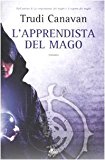
L'apprendista del mago
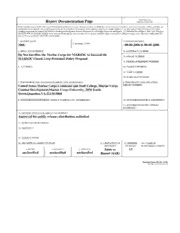
DTIC ADA509401: Do Not Sacrifice the Marine Corps for MARSOC to Succeed the MARSOC Closed Loop Personnel Policy Proposal
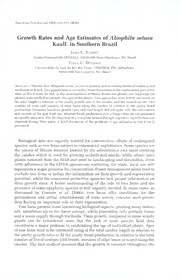
Growth Rates and Age Estimates of Alsophila setosa Kaulf. in Southern Brazil
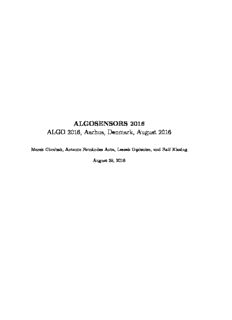
ALGOSENSORS 2016 ALGO 2016, Aarhus, Denmark, August 2016

Jews and other minorities in Byzantium
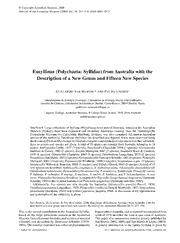
Eusyllinae (Polychaeta: Syllidae) from Australia with the description of a new genus and fifteen new species
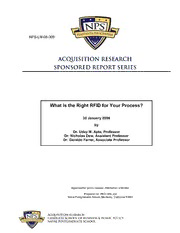
DTIC ADA498749: What Is the Right RFID for Your Process?

TS 125 423 - V9.8.0 - Universal Mobile Telecommunications System (UMTS); UTRAN Iur interface Radio Network Subsystem Application Part (RNSAP) signalling (3GPP TS 25.423 version 9.8.0 Release 9)

Banksys Xenta Benutzerhandbuch
![Report of the fifth session of the Committee on aquaculture [elektronische middelen] book image](https://cdn.pdfdrive.to/media/content/thumbnails/61c9c127-6885-4257-83d0-ade79992e930.webp)
Report of the fifth session of the Committee on aquaculture [elektronische middelen]
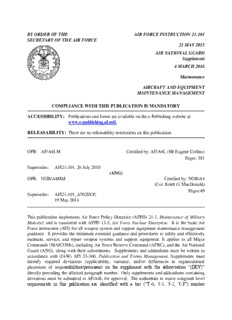
BY ORDER OF THE SECRETARY OF THE AIR FORCE AIR FORCE INSTRUCTION 21-101 21 ...
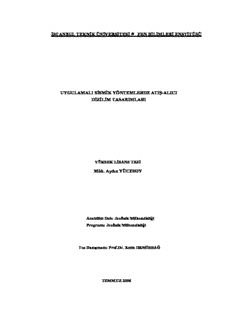
bölüm 1: giriş
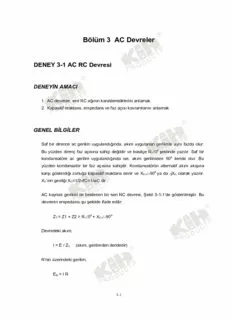
Bölüm 3 AC Devreler

Elasticsearch 7 Quick Start Guide : get up and running with the distributed search and... analytics capabilities of elasticsearch.
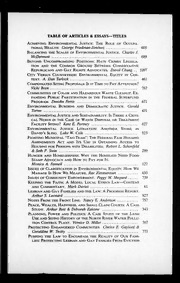
Fordham Urban Law Journal 1993 - 1994: Vol 21 Index

Børns angst for venepunktur

bühnentauglich?
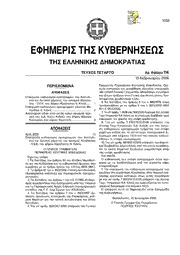
Greek Government Gazette: Part 4, 2006 no. 114

NATYACHANVAR
